|
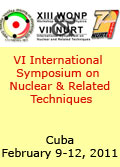
|
 |
|
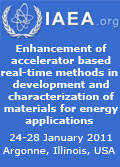 |
 |
|
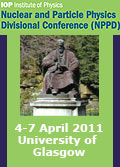
|
 |
|

|
 |
|
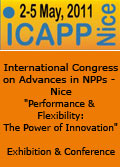
|
| |
|
|
|
|
Si no desea recibir mas este Boletín haga click aqui. |
|
|
|
|
|
|
|
|
|
|
|
|
|
|
|
 |

 |
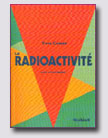 |
La Radioactivité
Nucleon, 2006, 520 p., 35 €
Ce livre a été conçu pour une lecture à plusieurs niveaux : il peut permettre aussi bien une première initiation qu’un approfondissement des connaissances.
On peut distinguer dans cet ouvrage, dont la table des matières est accessible sur le site, trois grandes parties d’un nombre de pages à peu près équivalent :
- la première partie (chapitres 1 à 6) introduit les notions de base et explique pourquoi, comment et quand les noyaux radioactifs se désintègrent.
|
- la deuxième partie (chapitres 7 à 12) permet d’approfondir ces notions, avec deux chapitres qui traitent de l’équivalence masse-énergie et des aspects énergétiques des désintégrations, avant de procéder à un inventaire des radionucléides naturels et artificiels. A cette occasion, le livre propose des repères historiques sur les principales étapes qui ont jalonné la découverte progressive des multiples caractéristiques des désintégrations radioactives, depuis la découverte initiale de Becquerel en 1896, puis sur la façon dont on a pu créer et identifié des noyaux de plus en plus lourds appartenant à des éléments de numéros atomiques élevés (transuraniens, transfermiens).
- la dernière partie du livre (chapitres 13 et 14) est consacrée à l’utilisation des radionucléides, essentiellement en médecine (scintigraphie, radiothérapie), en archéologie et dans les sciences de la terre (méthodes de datation), puis à une analyse assez approfondie des produits radioactifs qui se forment dans les réacteurs nucléaires (produits de fission, transuraniens ou actinides, produits d’activation).
Si les 6 premiers chapitres sont incontournables (une lecture sélective des 90 pages de base est proposée pour la première initiation), les 8 autres chapitres sont les pièces d’un menu à la carte qui l’on peut pratiquement aborder dans un ordre quelconque. Le livre propose plus de 200 exercices (ainsi que leurs solutions) et différentes annexes, en particulier sur l’utilisation des bases de données qui donnent sur internet toutes les caractéristiques physiques des radionucléides.
Extraído de:
http://www.nucleon.fr/page2.htm
|
 |
 |
The Future of Nuclear Fuel Cycle
Massachusetts Institute of Technology (MIT), September 2010, 36 p.
Uranium supplies will not limit the expansion of nuclear power in the US or around the world for the foreseeable future, according to a major new interdisciplinary study produced under the auspices of the MIT Energy Initiative.
The study challenges conventional assumptions about nuclear energy. It suggests that nuclear power using today’s reactor
|
technology with a once-through fuel cycle can play a significant part in displacing the world’s carbon-emitting fossil-fuel plants and thus help to reduce the potential for global climate change. But determining the best fuel cycle for the next generation of nuclear power plants will require more research, the report concludes
The report focuses on what is known as the “nuclear fuel cycle”—a concept that encompasses both the kind of fuel used to power a reactor (currently, most of the world’s reactors run on mined uranium that has been enriched, while a few run on plutonium) and what happens to the fuel after it has been used (either stored on site or disposed of underground—a “once-through” cycle—or reprocessed to yield new reactor fuel).
A summary report of the study was released on September 16. The full report, including all the appendices, will be released later this year.
Extraído de:
http://web.mit.edu/mitei/news/spotlights/nuclear-cycle.html
Summary report
|
 |
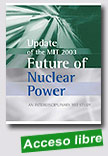 |
Update of the MIT 2003 Future of Nuclear Power Study
Massachusetts Institute of Technology (MIT), 2009, 21 p.
In 2003 a group of MIT faculty issued a study on The Future of Nuclear Power.1
The study was motivated by growing concern about global warming and the urgency of developing and deploying electricity generating technologies that do not emit CO2 or other greenhouse gases (GHG). The study addressed the steps needed in the near term in order to enable nuclear power to be a viable marketplace option at a time and at a scale that could
|
materially mitigate climate change risks. In this context, the study explicitly assessed the challenges of a scenario in which nuclear power capacity expands from approximately 100 GWein the United States in 2000 to 300 GWe at mid-century (from 340 to 1000 GWe globally), thereby enabling an increase in nuclear power’s approximately 20%share of U.S. electricity generation to about 30% (from 16% to 20% globally). The important challenges examined were (1) cost, (2) safety, (3) wastemanagement, and (4) proliferation risk. In addition, the report examined technology opportunities and needs, and offered recommendations for research, development, and demonstration. The 2003 MIT study on The Future of Nuclear Power, supported by the Alfred P. Sloan Foundation, has had a significant impact on the public debate both in the United States and abroad and the study has influenced both legislation by the U.S. Congress and the U.S. Department of Energy’s (DOE) nuclear energy R&D program. This report presents an update on the 2003 study. Almost six years have passed since the report was issued, a new administration in Washington is formulating its energy policy, and, most importantly, concern about the energy future remains high. We review what has changed from 2003 to today with respect to the challenges facing nuclear power mentioned above. A second purpose of this Update is to provide context for a new MIT study, currently underway, on The Future of the Nuclear Fuel Cycle, which will examine the pros and cons of alternative fuel cycle strategies, the readiness of the technologies needed for them, and the implications for near-term policies.
Extraído de:
http://web.mit.edu/nuclearpower/pdf/nuclearpower-update2009.pdf
|
 |
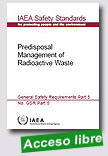 |
|
management of particular types of radioactive waste, for storage of radioactive waste, for assuring safety by developing safety cases and supporting safety assessments, and for applying appropriate management systems.
Extraído de:
http://www-pub.iaea.org/MTCD/publications/PubDetails.asp?pubId=8004
|
 |
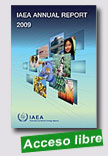 |
Nuclear Technology Review 2010
IAEA, 2010, 168 p.
This review reports on the global status and trends in fields of nuclear science and technology. Topics covered include nuclear power development, including innovative reactors and fuel cycle approaches; nuclear applications in fields of health, agriculture, water, and other areas; nuclear information and knowledge management; and issues of sustainable development in which nuclear technologies can play an important role. |
Versión en español
Extraído de:
http://www-pub.iaea.org/MTCD/publications/PDF/NTR2010_web.pdf
|
 |
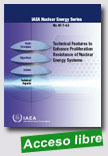 |
Technical Features to Enhance Proliferation Resistance of Nuclear Energy Systems
IAEA Nuclear Energy Series, 2010, 55 p.
The purpose of this report is to provide technical readers with a description of a qualitative framework for examination of the proliferation resistance provided by the intrinsic features of innovative nuclear energy systems and fuel cycles, and to provide a high level survey of a number of innovative nuclear energy systems and fuel cycles with respect to that framework.
These results are not intended to be used for comparison or
|
selection of particular systems, but rather to describe their technical features with respect to proliferation resistance. For a detailed proliferation assessment of these systems, the methodology being developed for INPRO or GIF could be used.
Extraído de:
http://www-pub.iaea.org/MTCD/publications/PDF/Pub1464_web.pdf
|
 |
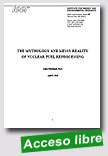
|
The Mythology and Messy Reality of Nuclear Fuel Reprocessing
Institute for Energy and Environmental Research, April 2010, 50 p.
Contrary to some prevailing opinion, reprocessing would not eliminate the need for a deep geologic disposal program to replace Yucca Mountain. It aggravates waste, proliferation, and cost problems. The volume of waste to be disposed of in deep geologic repository is increased about six times on a lifecycle basis in the French approach compared to the once-through no-reprocessing approach of the United States. |
A new report by the Institute for Energy and Environmental Research (IEER), a nonprofit scientific research group, shows that France uses less than 1 percent of the natural uranium resource, contrary to an impression among some policy makers. The report has several recommendations for President Obama’s Blue Ribbon Commission on America’s Nuclear Future, which was created to address U.S. nuclear waste issues after the administration’s cancellation of the Yucca Mountain program
Extraído de:
http://www.ieer.org/reports/reprocessing2010pr.pdf
|
 |
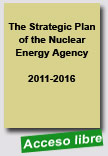 |
The Strategic Plan of the Nuclear Energy Agency - 2011-2016
Nuclear Energy Agency (NEA), 5 July 2010, 40 p.
This Strategic Plan is intended to guide the NEA as it seeks to meet the evolving needs of members countries in the field of nuclear energy, including applications of ionising radiation. Following the introduction, the second chapter presents the NEA mission statement and general strategies; the third chapter describes specific NEA activities, sector by sector. The fourth chapter describes governance of the Agency and the fifth chapter explains interactions with external organizations and groups, including those within the OECD family.
|
This publication is also available in French as: Le plan stratégique de l'Agence pour l'énergie nucléaire - 2011-2016 -
http://www.nea.fr/nea/plan-strategique-2011-2016.pdf
Extraído de:
http://www.nea.fr/pub/ret.cgi?id=new#6959
|
 |
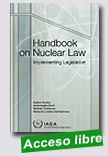 |
Handbook on Nuclear Law: Implementing Legislation
IAEA, 2010, 156 p.
This handbook is a practical aid to legislative drafting that brings together, for the first time, model texts of provisions covering all aspects of nuclear law in a consolidated form. Organized along the same lines as the Handbook on Nuclear Law, published by the IAEA in 2003, and containing updated material on new legal developments, this publication represents an important companion resource for the development of new or revised nuclear legislation, as well as for instruction in the fundamentals
|
|
 |
|
|
|
|
|
|
|
|
|
|
|
|
|
|
